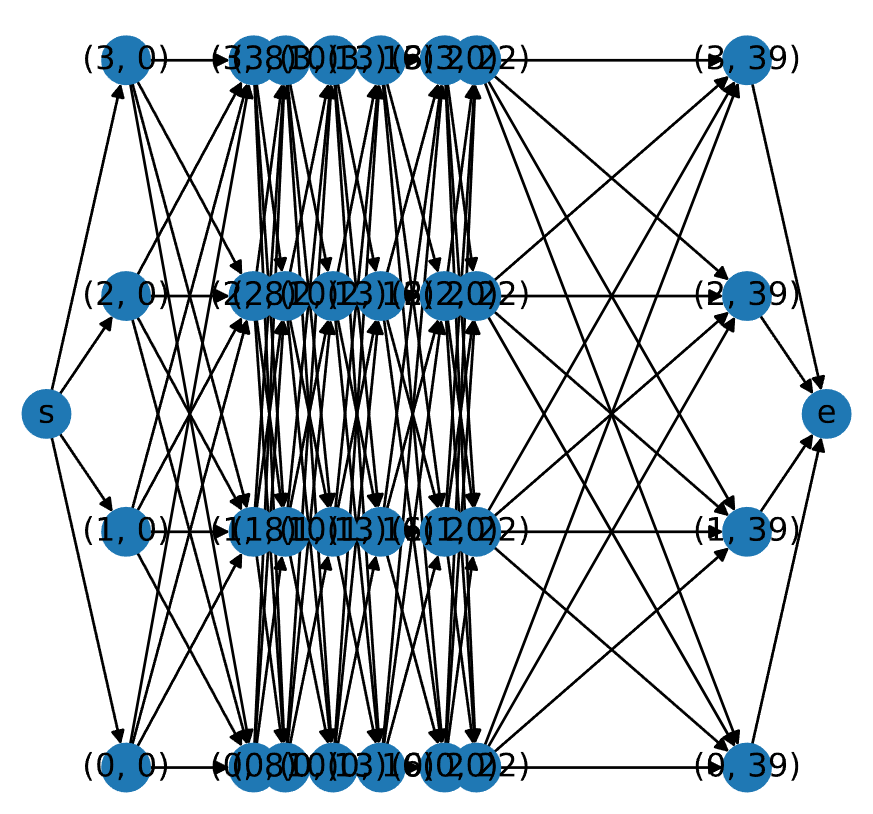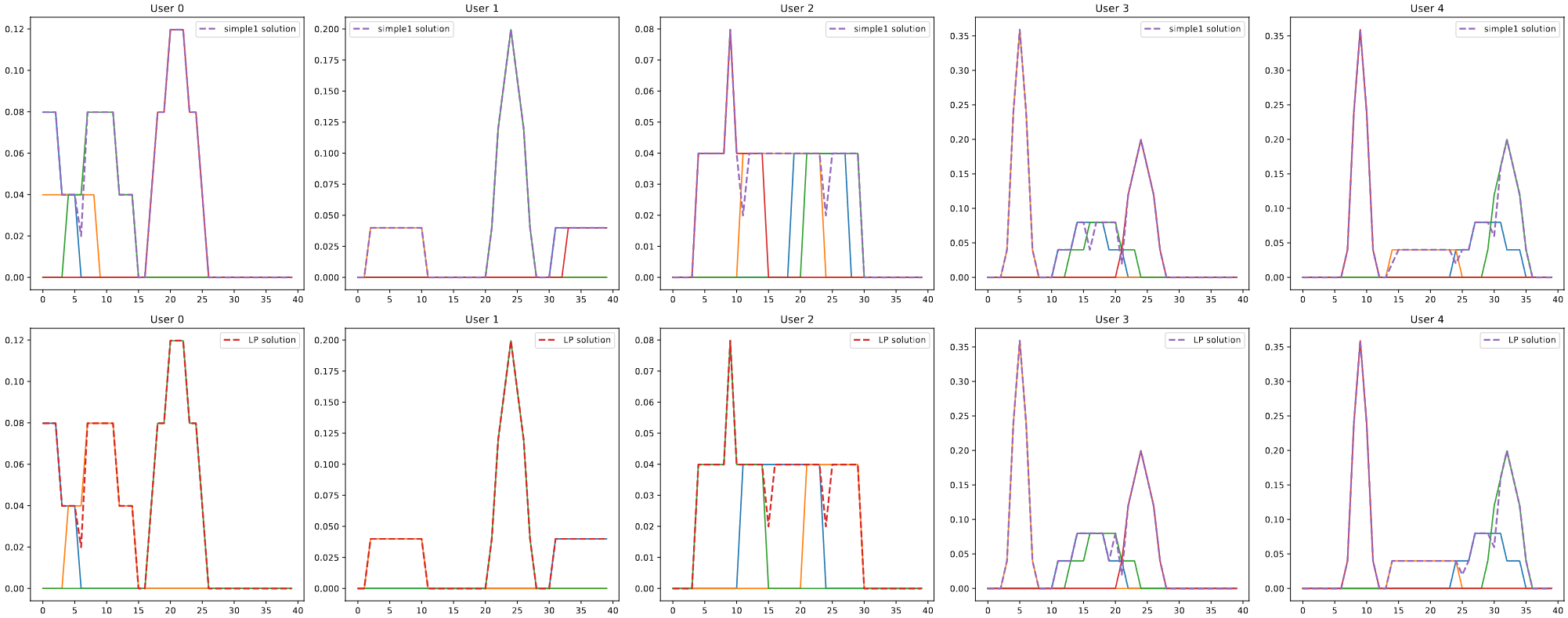Attendees:
Petar Israel Jens?
Agenda:
Presentation follow up
- Shortest path
- Dijkstra
- Bellman-ford
- Longest path (sp with neg weights)
- Jimmy Nielsen
- crossings
- Reduce search space of allocation changing times
- Reduce what sats can be changed from → to
Worked on:
- Temporal lattice graph
- Longest path solution
- Weights (Point estimate vs Distribution )
- Reduced graphs
- Ideas for graph building techniques
- throughput ranking
- slope ranking
- Antenna gain model
- plots her
- Numerical vs Analytical
- parametrize orbits → gain function
- Computational complexity in or out of scope
Future Work
- Capacity as distributions
- Bellaman Ford with Convolutions
- Parameterise distributions
- faster/analytical convolutions
Visuals:





Notes:
- Not go in the diretion of modelling the traffic in the constellation satellites
- Take the trafic models from other papers.
- latency profile for ground to sat has been done but not sat to sat (could be our contribution)
- average latency for packets arriving
- estimate the latency through the constellation satellite to the destination (could be ground or another satellite)
- For our user satellite
- make fixed packets arriving with a specific rate
- make a constant rate
- Network calculus
- What to optimize for:
- Start off by just doing what we are doing
Read papers about modelling traffic if easy, use that. if not use normals Less uncertainty with less satellites adding variance when doing convolution Connection leads to discovery. Preplanned optization vs. unceartenty in satellite utilization. If the unceartenty of the satellite utilization is high the preplanning doesnt give really that much clarity as we dont really know the capacity of the satellites anyway.
Moving window? Sliding window Size of window vs how long we are connected When the rate actually is very low we might also want to make switch (this is when the unceartenty is higher).